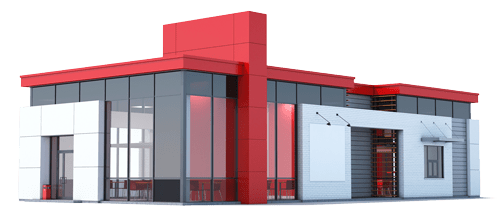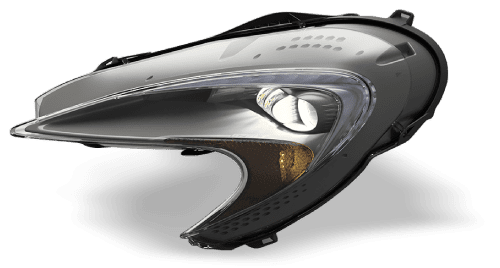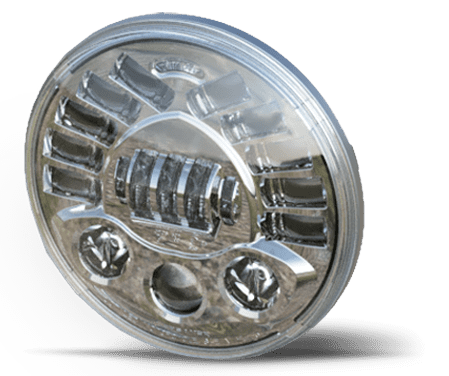
How To Keep Your Aftermarket Vehicle Lights in Top Condition

Aftermarket vehicle lights are an essential upgrade for many vehicles, offering improved illumination, aesthetic enhancements, and specialized functionalities. They are commonly favored by vehicle enthusiasts and professionals alike for their ability to significantly enhance visibility and overall performance.
However, maintaining their condition is crucial to ensure long-lasting performance and reliability. Learn how to keep your aftermarket vehicle lights in top condition so you can ensure the best results on the road.
The Basics of Aftermarket Vehicle Lights
Aftermarket vehicle lights are a versatile solution designed to replace or upgrade factory-installed lighting. They feature a wide range of options, including high-performance LEDs, halogen, and HID lights, tailored to specific needs. These needs may include greater brightness, better energy efficiency, or aesthetic appeal. Aftermarket vehicle lights are popular for anyone aiming to improve visibility, safety, or the vehicle’s overall look.
However, aftermarket lights differ from OEM lighting in terms of customization and durability. While they allow more freedom of choice, their maintenance requirements can be slightly more demanding, depending on the new parts you install. Understanding the features of these lights and how they operate is essential to keep them in top condition.
Always Compare Maintenance Requirements
When upgrading your vehicle’s lighting, note that aftermarket options allow for customization based on specific operational needs. You can easily obtain custom vehicle lighting that leverages high-quality aftermarket tech.
High-intensity discharge (HID) lights, LED lighting, and halogens are the most popular choices. Each type comes with its own maintenance requirements, and understanding these can prolong their lifespan. LED lights, for instance, are widely praised for being energy-efficient and durable, making them suitable for aesthetics and practicality.
For professionals such as fleet managers and release engineers, choosing the most appropriate lighting for each vehicle’s purpose can save time and costs associated with frequent replacements. Therefore, careful selection is the first step toward long-term satisfaction with aftermarket vehicle lights.

Cleaning and Maintenance to Preserve Light Performance
Keeping aftermarket lights clean is one of the most straightforward yet effective ways to maintain their performance. Dirt, road debris, and bugs can accumulate, diminishing the intensity of the beam and causing uneven lighting.
Regular cleaning with nonabrasive solutions is crucial for keeping the lenses clear and preventing scratches. Cleaning not only improves visibility but also helps maintain the factory-new appearance that is a hallmark of aftermarket lighting.
A consistent cleaning routine can mitigate exposure to harsh chemicals, such as road salt during winter. Those managing fleets or regularly using vehicles in high-stress conditions may want to adopt weekly inspections and cleaning protocols to ensure optimal lighting performance.
Addressing Damage and Diagnosing Potential Issues
A proactive approach to maintenance includes inspecting the light assemblies for cracks, chips, or structural issues. Damage to the housing, typically caused by road hazards or minor collisions, can lead to moisture ingress and electrical failure. Diagnosing problems early ensures that small issues do not pose visibility concerns, increasing safety risks on the road.
With aftermarket lights that incorporate complex wiring systems, loose or damaged connections should be addressed immediately. Professionals operating commercial vehicles can integrate scheduled inspections into their workflows, ensuring vehicles remain compliant with safety standards. Quality inspections are key for vehicles with high mileage or that are frequently exposed to demanding conditions.
Protecting Lights From Weather and Environmental Factors
Weatherproofing aftermarket lights is essential for sustaining their performance over time. Rain, snow, or excessive heat can compromise the functionality of non-sealed lights by introducing moisture or prematurely wearing out critical components. Proper sealing with high-quality gaskets can prevent water, dust, and other contaminants from penetrating the light housing.
Adding weather-resistant coatings shields the lenses and housing from environmental degradation. For design engineers or vehicle owners operating in climates with heavy snowfall, heated lighting elements can prevent snow from accumulating on light surfaces while maintaining full visibility.
Maintaining the Electrical Integrity of Lighting Systems
Aftermarket lights rely heavily on the vehicle’s electrical system for proper functionality. Overloading circuits due to poorly calibrated lights can result in blown fuses or even cause disruptions to other critical systems. Ensuring the wiring is compatible with the vehicle’s power capacity is essential to prevent long-term electrical issues.
Routine inspections to check wiring integrity, corrosion, or loose connections can mitigate potential failures. Employing voltage regulators or fuses as precautions ensures the lights operate within safe parameters. For vehicle fleet managers and supply chain engineers, integrating electrical inspections as part of routine maintenance can lead to better resource allocation and improved overall fleet reliability.

Driving Practices That Preserve Light Longevity
Driving with aftermarket lights requires proper habits to maximize their efficiency while safeguarding their longevity. Avoiding excessive reliance on high beams or auxiliary lighting when it’s not necessary is one such practice, as constant overuse can reduce the lifespan of lighting components.
For anyone operating in regions prone to rough terrains or uneven surfaces, minimizing vibration stress on light fixtures is a worthwhile precaution. Proper installation from the outset ensures lights are securely mounted and reduces the risk of failure caused by loose fittings.
Storing Lights for Long-Term Durability
For vehicles that are not in use year-round, such as seasonal fleets or recreational vehicles, proper storage of aftermarket lights is just as important as their active maintenance. Covering the lenses to shield them from dust and UV exposure during storage can preserve their clarity and avoid discoloration.
In addition, ensuring that stored lights are kept in an environment with regulated humidity and temperature prevents the degradation of the light’s structural and electrical components.
Sustaining Peak Lighting Condition Year-Round
Upgrading outdated aftermarket lights to newer, more energy-efficient models can provide better illumination and reduce overall power consumption. Technology in the lighting sector is evolving rapidly, and upgrading to advanced LED systems with built-in smart features such as adaptive lighting or automatic adjustment can significantly enhance both performance and safety.
Evaluating the long-term benefits of upgrading lighting can lead to better vehicle performance and reduced maintenance costs. Knowing how to keep your aftermarket vehicle lights in top condition requires more than just one-off adjustments or occasional cleaning. A thorough understanding of the lights’ various components, paired with proactive maintenance, ensures that your lighting solutions deliver consistent performance.
Take action today to ensure your aftermarket lights are performing at their best. From regular cleaning to weatherproofing and seeking expert advice, every step you take makes a difference.


